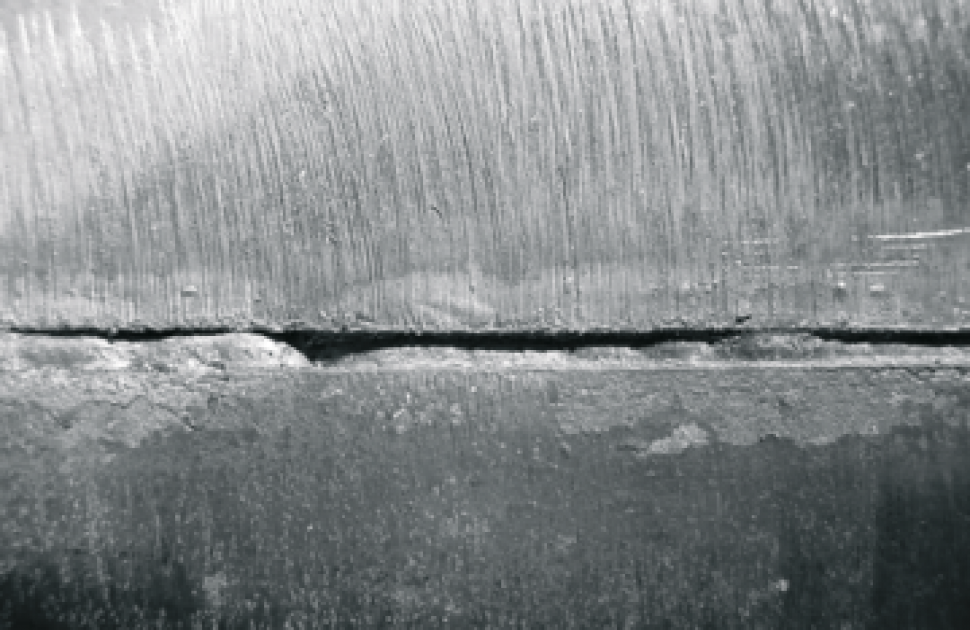Step-by-Step Guide to Preventing Weld Undercut in Different Metals
Step-by-Step Guide to Preventing Weld Undercut in Different Metals
Blog Article
Understanding the Causes and Solutions for Undercut Welding in Metal Fabrication Procedures
In the world of steel construction procedures, the incident of undercut welding presents a considerable difficulty that demands an extensive understanding of its causes and feasible options. The complex interaction of different elements during welding operations can bring about this unwanted sensation, affecting the architectural stability and overall quality of the bonded joints - Preventing weld undercut. By studying the source of undercut welding and exploring reliable therapeutic procedures, fabricators can raise the requirement of their workmanship and make certain the manufacturing of perfect metal parts
Typical Root Causes Of Undercut Welding
Frequently neglected in steel construction, undercut welding takes place due to different variables that require meticulous attention and competence to be successfully minimized. In addition, inappropriate welding strategies, such as using the incorrect welding angle or take a trip rate, can additionally add to damage development. The option of welding specifications, such as voltage, present, and cable feed speed, plays a considerable role in the incident of undercut welding.
Impact of Incorrect Welding Parameters
Incorrect welding parameters can considerably compromise the integrity and top quality of bonded joints in steel construction processes. The impact of wrong welding criteria materializes in different ways, leading to architectural weak points and problems in the welded parts. One essential facet impacted by improper welding criteria is the infiltration depth of the weld. Insufficient warmth input as a result of low welding currents or exceedingly high traveling speeds can cause poor combination in between the base steels, resulting in insufficient joint infiltration and compromised bonds. Alternatively, extreme heat input brought on by high welding currents or sluggish traveling rates can result in too much and burn-through reinforcement, developing a weak and unstable weld framework. Additionally, wrong specifications such as improper voltage setups or incorrect electrode angles can add to erratic weld grain profiles, lack of blend, and enhanced opportunities of problems like damaging. Precise focus to welding parameters is vital to make certain the production of top notch welds with the wanted mechanical homes and architectural stability.
Impact of Improper Lantern Angle
Incorrect torch angle in welding operations can dramatically influence the top quality and stability of the final weld joints in steel construction processes. Damaging is a typical welding problem where a groove forms along the weld toe, weakening the joint and endangering its structural integrity.
A torch angle that is too high can cause inadequate penetration, insufficient combination, and enhanced spatter. On the other hand, a lantern angle that is as well shallow can cause extreme penetration, burn-through, and distortion of the base product. Preventing weld undercut. Correct lantern angle is vital for ensuring regular weld high quality, strength, and look
To avoid undercutting and various other defects created by inappropriate lantern angles, welders must be educated to maintain the proper torch angle throughout the welding procedure. Regular surveillance and modification of lantern angles during welding can aid attain sound welds with marginal problems.
Duty of Inadequate Welding Methods

Another facet of insufficient welding strategies is incorrect weld prep work. Insufficient cleansing of the base metals, wrong joint layout, or inadequate edge preparation can all contribute to damage welding. Moreover, inadequate protecting gas insurance coverage or using the incorrect sort of gas can lead to incomplete fusion and the development of undercut problems.
To attend to the Continued duty of poor welding techniques in steel fabrication processes, it is vital to offer extensive training for welders. Proper education and learning on welding criteria, joint preparation, and shielding gas option can help protect against undercut welding and make sure premium welds in steel construction projects.
Efficient Solutions for Undercut Welding
Dealing with undercut welding in steel construction calls for executing reliable services to boost weld quality and architectural integrity. Among the key services to battle undercut is to change welding official website criteria such as voltage, current, and take a trip rate to guarantee appropriate warmth input and combination. By fine-tuning these setups, welders can prevent extreme melting of the base steel and filler material, minimizing the likelihood of undercut formation.
In addition, proper joint preparation is vital in preventing undercut. Ensuring clean base steel surface areas without pollutants and making use of the appropriate bevel angle can assist advertise far better weld penetration and decrease the danger of undercut - Preventing weld undercut. Using ideal welding strategies, such as oscillating the lantern or weaving, can also aid in distributing warm uniformly and loading the weld joint properly, lessening the opportunity of undercut issues
In addition, selecting the correct welding consumables, including electrodes and filler steels, is essential in reducing undercut. Utilizing materials with suitable chemical structures and mechanical residential or commercial properties can contribute to accomplishing sound welds with very little undercut. Regular evaluation and high quality control steps should also be implemented to detect and address undercut issues promptly, making certain the total honesty of produced metal components.

Conclusion
In verdict, understanding the causes and remedies for undercut welding in steel construction processes is essential for achieving high-quality welds. By addressing usual causes such as incorrect welding criteria, incorrect torch angle, and poor welding techniques, welders can prevent damaging and guarantee strong, sturdy welds. It is important to take notice of these factors and apply efficient solutions to boost the general welding procedure and end product quality.

Report this page